Economy

BEA: GDP Slows to 2.2 Percent in the Fourth Quarter
Written by Peter Wright
March 29, 2019
Editor’s note: Steel Market Update is sharing the following Premium content with all its readers in this issue. For more information on how to upgrade to a Premium-level subscription, email info@SteelMarketUpdate.com.
Growth of U.S. GDP in fourth-quarter 2018 declined to 2.2 percent from 3.4 percent in the third quarter, according to the third and final estimate released Friday by Bureau of Economic Analysis (BEA).
![]() Stated the BEA: “The increase in real GDP in the fourth quarter reflected positive contributions from personal consumption expenditures, nonresidential fixed investment, exports, private inventory investment, and federal government spending. Those were partly offset by negative contributions from residential fixed investment and state and local government spending. Imports, which are a subtraction in the calculation of GDP, increased. The deceleration in real GDP growth in the fourth quarter reflected decelerations in private inventory investment, PCE, and federal government spending and a downturn in state and local government spending. These movements were partly offset by an upturn in exports and an acceleration in nonresidential fixed investment. Imports increased less in the fourth quarter than in the third quarter.”
Stated the BEA: “The increase in real GDP in the fourth quarter reflected positive contributions from personal consumption expenditures, nonresidential fixed investment, exports, private inventory investment, and federal government spending. Those were partly offset by negative contributions from residential fixed investment and state and local government spending. Imports, which are a subtraction in the calculation of GDP, increased. The deceleration in real GDP growth in the fourth quarter reflected decelerations in private inventory investment, PCE, and federal government spending and a downturn in state and local government spending. These movements were partly offset by an upturn in exports and an acceleration in nonresidential fixed investment. Imports increased less in the fourth quarter than in the third quarter.”
GDP is now measured and reported in chained 2012 dollars, and on an annualized basis in the fourth quarter totaled $18.765 trillion. The growth calculation is misleading because it takes the quarter-over-quarter change and multiplies by 4 to get an annualized rate. This makes the high quarters higher and the low quarters lower. Figure 1 clearly shows this effect. The blue line is the trailing 12-months’ growth and the black line is the headline quarterly result. On a trailing 12-month basis, GDP was up by 2.97 percent in Q4, second only to Q3, which was the best result since Q2 2015. To put that result into perspective, the average in 36 quarters since Q1 2010 has been 2.20 percent. The blue line in Figure 1 shows the slow but steady progress of the trailing 12-month result since Q2 2016.

Figure 2 shows the headline quarterly results since 1990 and the January 2019 Congressional Budget Office forecast through 2022. The CBO accurately forecasted the growth rate in Q4 2018 and expects 2019 as a whole to get a boost from the tax break before falling back in the third quarter.
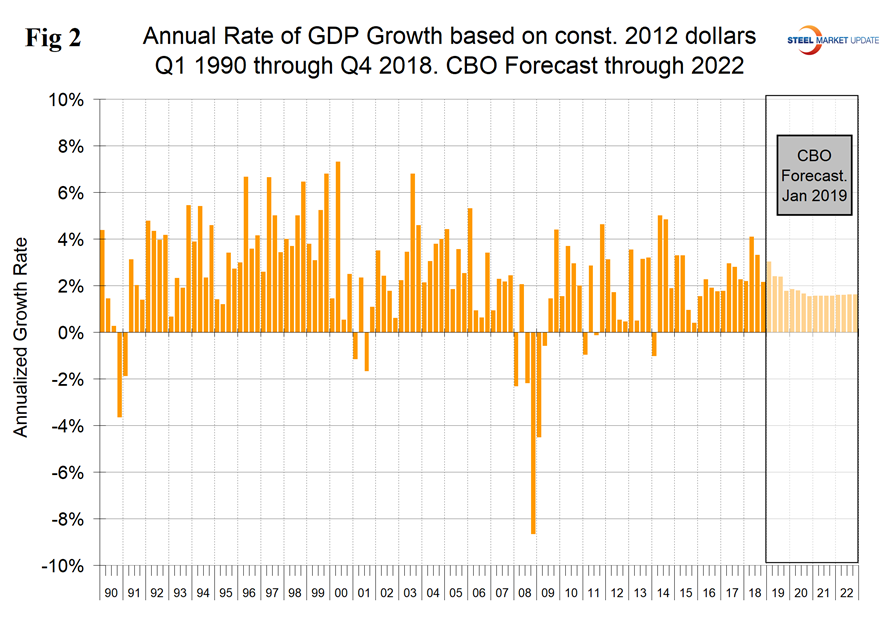
The mix of the six major contributory components in the final GDP growth calculation is shown in Figure 3. Normally, personal consumption is the dominant growth driver and this was the case in the fourth quarter. Personal consumption includes goods and services, the goods portion of which includes both durable and non-durables. The negative contribution of net exports declined in the fourth quarter and the positive contribution of inventories also declined. The contribution of inventories increased from negative 1.17 percent in Q2 2018 to positive 2.33 percent in Q3 2018 and declined to positive 0.11 percent in Q4. Rising inventories are entered as a positive in the GDP calculation. Note that in the definitions at the end of this piece, inventories are not mentioned. Over the long run, inventory changes are a wash and simply move growth from one period to another.
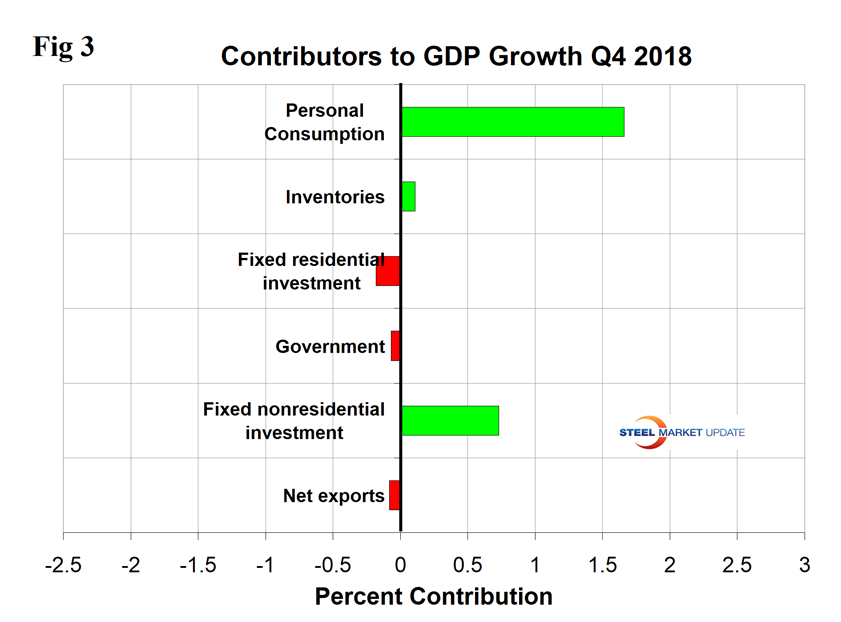
On March 29, looking forward into the first quarter of 2019, Economy.com wrote: “Nominal personal income growth came in a little light in February, rising 0.2%. This was weaker than either we or the consensus anticipated and comes on the heels of a 0.1% decline in January. Wage and salaries rose 0.3%, identical to the gain in January. Disposable income, which is key for consumer spending, rose 0.2% in February, offsetting the decline in January. All told, fundamentals remain supportive for consumer spending and we anticipate that it will firm following a little lull in the first quarter.”
Figure 4 shows the contributions of residential and nonresidential investment. After the recession, nonresidential investment bounced back, but residential did not and has had less than a 1 percent variation since Q3 2010. After a disappointing result in Q3, nonresidential bounced back in Q4 when it made a 0.73 percent contribution. The contribution of government expenditures was negative 0.07 percent in the fourth quarter.
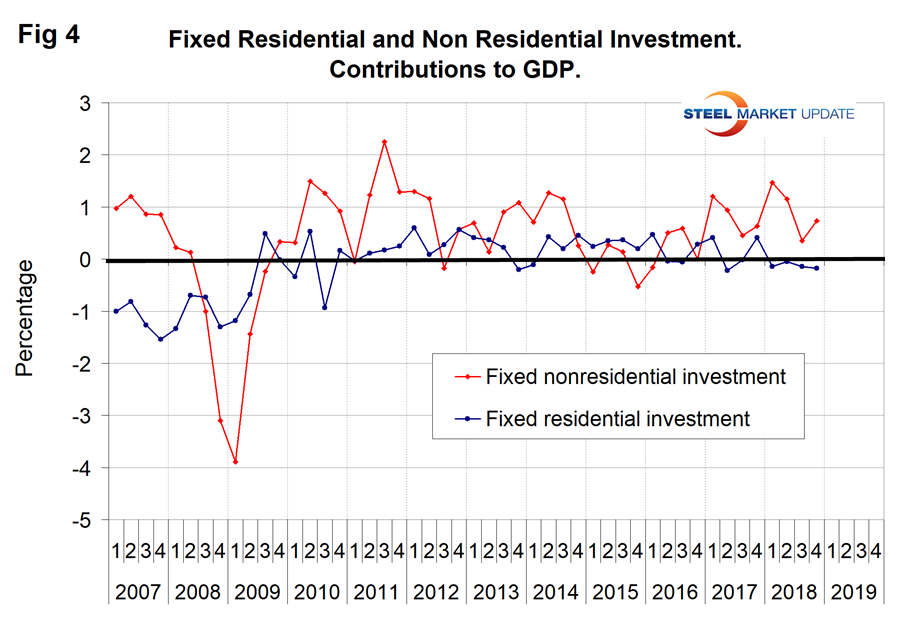
Figure 5 shows the quarterly contributors of the six major subcomponents of GDP since Q1 2007. This chart clearly shows the whipsaw effect of inventory changes, which are coded pale blue.
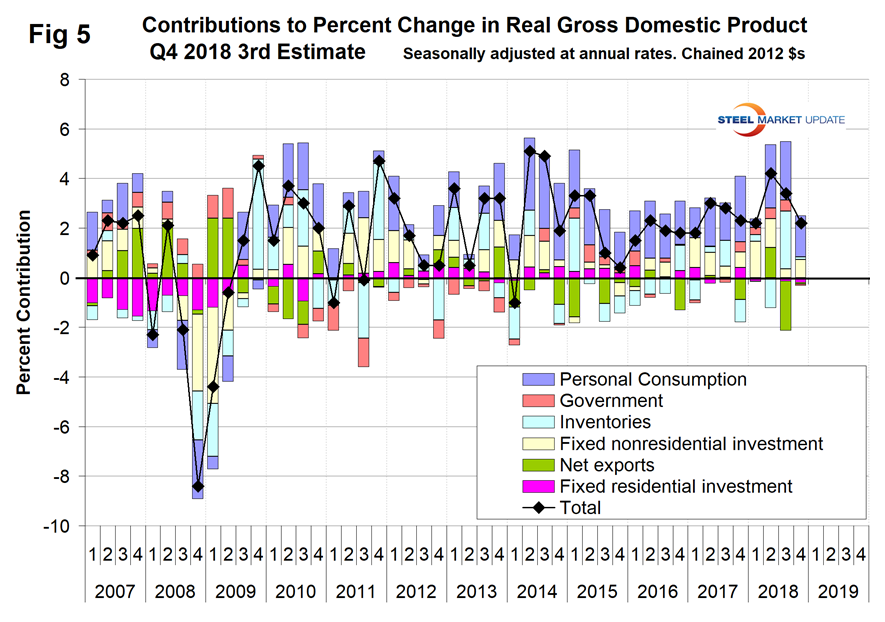
Figure 6 shows the breakdown of the $18.8 trillion economy.
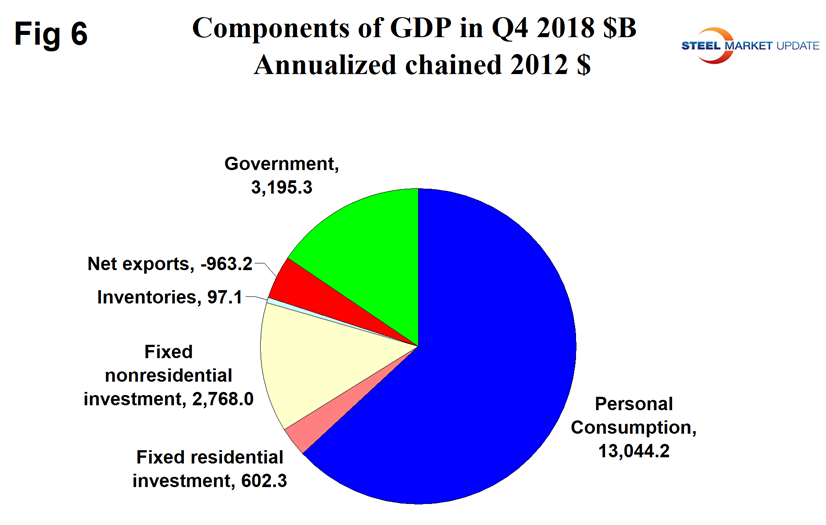
SMU Comment: There was a slight decrease in the trailing 12-month growth rate in the fourth quarter, but other than that it has improved for each of the last 10 quarters. The third quarter of 2018 was the first quarter to reach 3.0 percent since Q2 2015. Current performance is high enough to stimulate a growth in steel consumption, which requires about a 2.2 percent growth to break even. In its January 2019 forecast, the CBO continued to project a decline in economic growth in both 2019 and 2020, to fall below 2.0 percent in Q4 2019 where it will remain through 2029.
The CBO estimates that the partial shutdown delayed $18 billion in federal spending and suspended some federal services, thus lowering the projected level of real GDP in first-quarter 2019 by $8 billion (in 2019 dollars), or 0.2 percent.
Definition of GDP: Gross domestic product (GDP) is the value of the goods and services produced by the nation’s economy less the value of the goods and services used up in production.
GDP is defined as Consumption (C) plus Investment (I) plus Government Spending (G) plus [Exports (E) minus Imports (I)] or: GDP = C + I + G + (E-I)
This equation is known as an identity. An identity is an equality that remains true regardless of the values of any variables that appear within it. That means it is not a guess or an approximation. It is simple reality.
National savings is GDP minus (consumption plus government spending). That means that investment equals savings plus net exports. If there are no net exports, then money must come back into the U.S. from outside the country to finance investments, along with savings.
Thus, if there is a government deficit, there must be savings by both consumers and businesses, plus capital flows from outside the country, to offset that deficit in order for there to be any money left over for investments.
Another definition of GDP states that it equals the growth in working population multiplied by their productivity.
Thus, if there is a government deficit, there must be savings by both consumers and businesses, plus capital flows from outside the country, to offset that deficit in order for there to be any money left over for investments.
Another definition of GDP states that it equals the growth in working population multiplied by their productivity.

Peter Wright
Read more from Peter WrightLatest in Economy

New York state manufacturing index drops again in April
Firms were pessimistic, with the future general business conditions index falling to its second lowest reading in the more than 20-year history of the survey

Construction adds 13,000 jobs in March
The construction sector added 13,000 jobs, seasonally adjusted, in March, but tariffs could undermine the industry.

Supply chains, end-users brace for impact from tariffs
Supply chains are working through what the tariffs mean for them

ISM: Manufacturing expansion loses steam after two months of growth
US manufacturing activity slowed in March after two straight months of expansion, according to supply executives contributing to the Institute for Supply Management (ISM)’s latest report.

Chicago Business Barometer rose to 16-month high in March
The Chicago Business Barometer increased for the third-consecutive month in March. Despite this, it still reflects contracting business conditions, as it has since December 2023.
